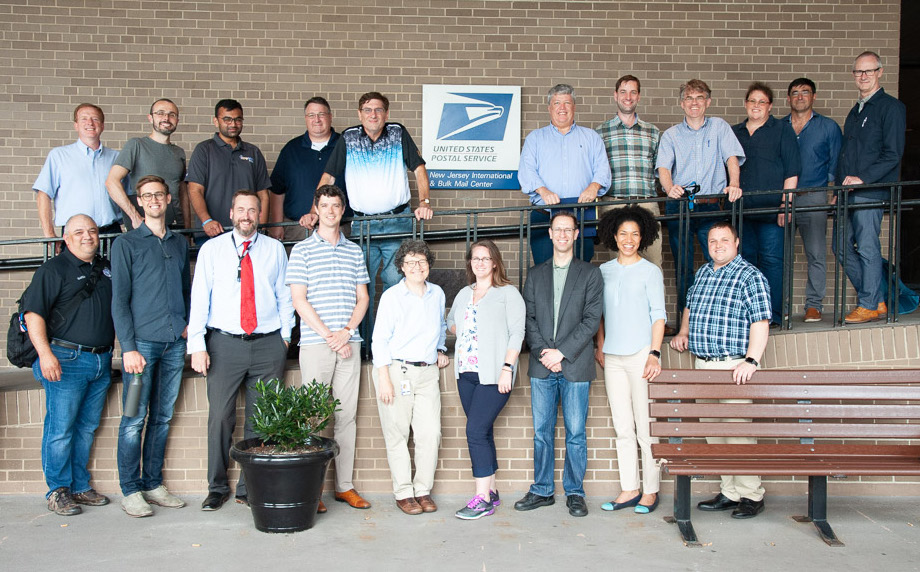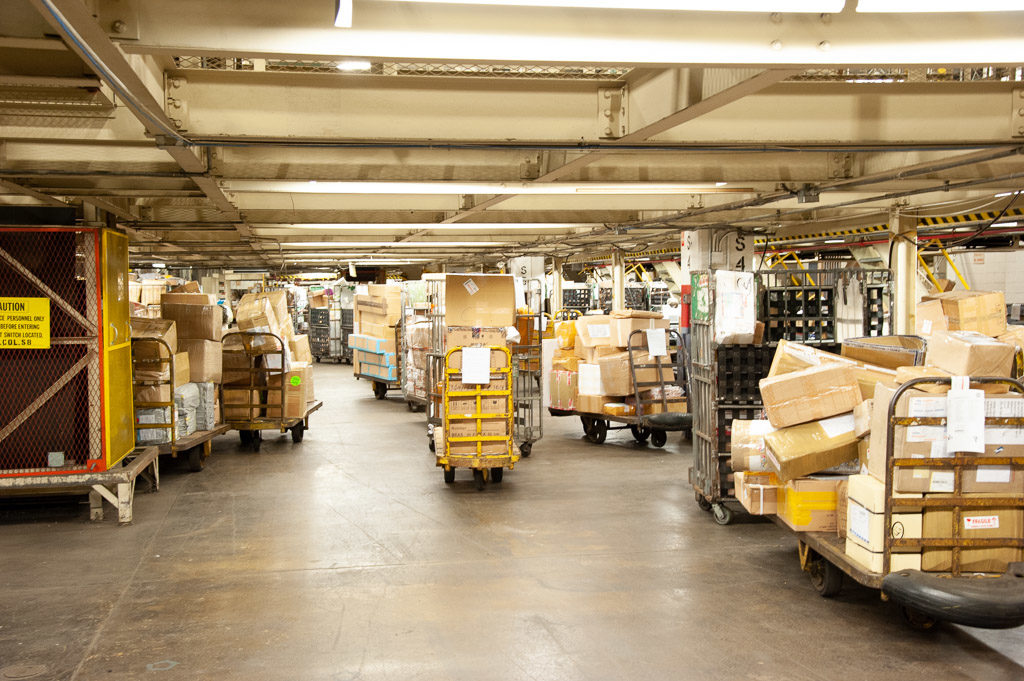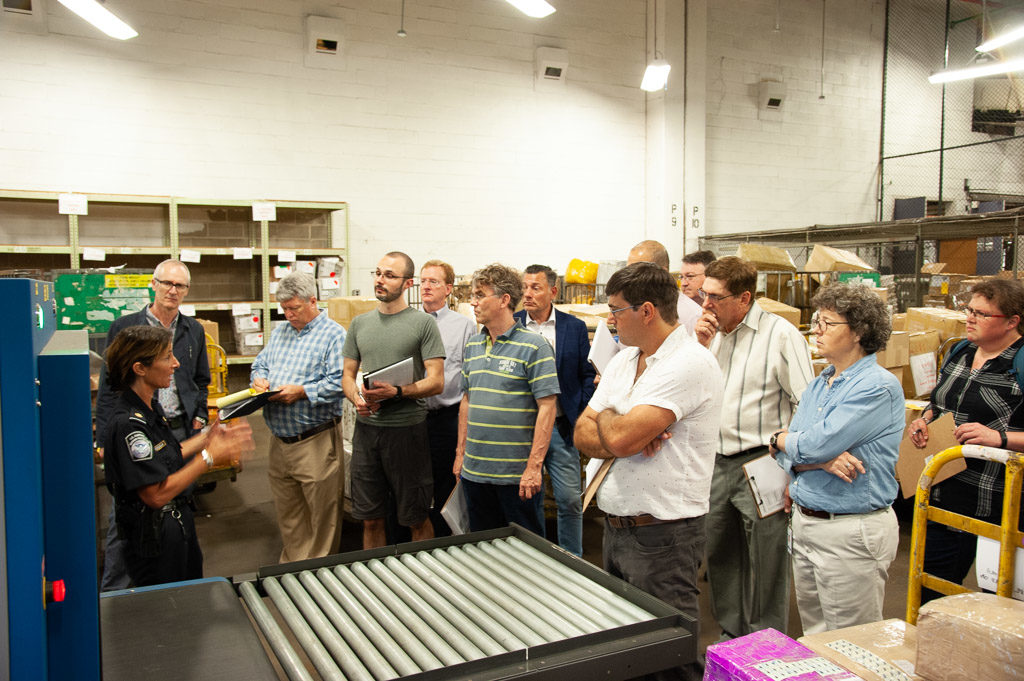Behind the scenes: Rapid iteration in the prototyping accelerator
Every day, more than 130 people in the United States die from opioid overdoses, and international mail has been identified as a route for illicit opioids entering the United States. These drugs are commonly transported in nearly pure, powdered form; large-scale drug trafficking can occur via very small packages sent in the mail.
To address this crisis, the Department of Homeland Security (DHS) Science and Technology Directorate (S&T) launched the Opioid Detection Challenge with federal government partners. This $1.55 million prize competition is designed to attract novel solutions that can rapidly detect opioids in the international mail.
Earlier this year, the Challenge announced eight finalists. Each team received $100,000 to develop their solution into a testable prototype during a 14-week accelerator. The finalists are working on a breadth of technologies, ranging from advanced imaging to X-ray diffraction techniques.
Within this tight timeline, teams have iterated their solutions and prepared for testing them on-site at a government facility. To help the finalists move forward quickly, the accelerator provided access to government facilities, advice from experts from the field, and additional resources in three accelerator modules.
Module 1: The parcel inspection process
Customs and Border Protection (CBP) and the United States Postal Inspection Service (USPIS) work together to prevent illicit materials from entering the country through the international mail. Understanding how different technologies fit into the systems and processes employed in this unique context will be key for making solutions work.
CBP’s Kim Ciccollela and Manuel Garza joined Derek Martinez from USPIS to lead a virtual webinar on the inspection process, including insights from the largest international mail facility in the country: New York’s John F. Kennedy International Airport.
After the webinar, the teams visited mail facilities at JFK airport and two other locations. The finalists were able to see how the inspection process works in person while meeting and learning from inspection officers on the ground. As Ms. Ciccollela said on the webinar, “you really have to see it to fully understand it.”
Finalists visit mail facilities to see how the inspection process works in person.
Module 2: The science of detection
The U.S. government already employs a number of technologies and methods for cataloging, prioritizing, and detecting opioids within different systems, including international mail. Curtailing the flow of illicit drugs is a complex and multidimensional effort that requires collaboration between many different stakeholders.
CBP’s Michael McCormick and Stephanie Smith from USPIS presented a webinar on current detection technologies and the importance of reducing false positive rates. They were joined by Jerry Cabalo from the Chemical Security Analysis Center, who shared how opioid threat lists are developed and prioritized, and Edward Sisco from the National Institute of Standards and Technology, who covered trace detection and how to account for environmental factors in the detection process.
Presenters encouraged finalists to think about their solutions as part of a system, where different technologies can be layered to improve the efficacy of the system as a whole.
Module 3: Designing for government use
A central goal of the Opioid Detection Challenge is to stimulate innovation that will continue beyond the program. S&T and its partners are committed to providing finalists with the tools they need to find new opportunities through contracting mechanisms and prepare their solutions for successful implementation.
CBP’s Robert Redes and S&T’s Janae Lockett-Reynolds shared the key constraints of integrating new technologies into human workflows. Robert offered a unique perspective on how operators work with solutions at the JFK Airport mail facility, and Janae provided an inside look at how S&T assesses new acquisitions.
CBP’s Ari Schuler and S&T’s Dusty Lang then presented on the intricacies of government contracting and opportunities for securing additional funding. During the webinar, they fielded questions on topics like the fastest contracting mechanisms and eligibility requirements for specific grant opportunities.
Teams were encouraged to think about longer-term contracting opportunities before the end of the Challenge so they will be able to continue developing their solutions without interruptions.
What’s next: Selecting winners and deploying solutions
Throughout the prototyping accelerator, teams were encouraged to iterate quickly while working toward the larger goal of saving lives by reducing the flow of opioids through the international mail. The accelerator culminated in a live test event hosted by DHS, where the finalists’ prototypes were tested on-site at a government facility. Judges with expertise in drug interdiction, postal operations, and detection technologies are reviewing submissions and will help select a winner and runner-up. The Challenge will award one $500,000 grand prize and one $250,000 runner-up prize.
Following the conclusion of the Challenge, S&T and its government partners plan to continue working with the providers of the most promising solutions to further develop prototypes and establish follow-on production agreements. The government plans to deploy these tools in international mail facilities, express consignment facilities, and other environments across the country that call for rapid, accurate detection of opioids and related substances.
The Challenge newsletter is the best way to stay informed. Sign up to receive future Challenge updates, including the winner announcement.



